Clancy Tucker's Blog, page 213
August 15, 2016
16 August 2016 - POLITICIANS KISSING BABIES

POLITICIANS KISSING BABIES
G'day folks,
Ever wondered why politicians kiss babies during an election campaign? Me too!
Baby-kissing may be a campaign trail cliche—and a germaphobe’s nightmare—but it’s also a time-honored American political tradition. According to George W. Bush Presidential Library and Museum Director Alan Lowe, who researched the subject for the institution’s new “Path to the Presidency” exhibit, the earliest recorded instance of a politician puckering up dates to 1833 when President Andrew Jackson toured New Jersey. As Jackson stopped to greet a mother and baby, the woman thrust her little boy into his arms. “Ah! There is a fine specimen of American childhood!” declared the president, who then passed the dirty-faced infant over to Secretary of War John Eaton for him to kiss.

While “Old Hickory” outsourced the job, his successor, Martin Van Buren, reportedly kissed quite a few babies, and the tradition took off. Not all politicians, however, embraced baby-smooching. President Grover Cleveland, perhaps not wanting to remind voters of reports that he had sired an illegitimate child, flatly refused.
In 1968, Richard Nixon declared, “I won’t wear a silly hat, or kiss a lady or a baby.” He told Life Magazine that he feared such “stunting” would make him “look like a jerk.”

Lowe says that candidates engage in baby-kissing because it can help them connect with voters. “The campaign trail can be a rough-and-tumble place, and this shows a softer, gentler side of candidates,” he says. “Voters want to elect someone who is a decent person, and this makes them more relatable.”
That means engaging in an activity that’s not the most hygienic. “As a mother,” said 1984 vice presidential candidate Geraldine Ferraro, “my instinctive reaction is how do you give your baby to someone who’s a total stranger to kiss, especially with so many colds going around?” Ferraro may not have understood the strange campaign ritual, but she kissed the babies nonetheless.

Clancy's comment: Mm ... Yuk!
I'm ...


Published on August 15, 2016 01:45
August 14, 2016
15 August 2016 - STUFF ABOUT MEN

STUFF ABOUT MEN
G'day folks,
Time to release some amazing bits of information about men. You ladies might enjoy it.













Clancy's comment: I guess you ladies had a good chuckle, eh? For you men who found this irritating, you need some serious counselling.
I'm ....


Published on August 14, 2016 14:49
August 13, 2016
14 August 2016 - MORTON HENRY MOYES

MORTON HENRY MOYES
G'day folks,
Morton Henry Moyes (1886-1981), Antarctic explorer and naval officer, was born on 29 June 1886 at Koolunga, South Australia, second surviving son of John Moyes, headmaster, and his wife Ellen Jane, née Stoward. Two brothers were John Stoward(1884-1972), Anglican bishop, and Alban George (Johnny) (1893-1963), journalist and cricket commentator.
Moyes was educated at the Collegiate School of St Peter, Adelaide, and the University of Adelaide, graduating B.Sc. in physics and mathematics in 1910, and representing the university at football and athletics. He was South Australian high and broad-jump champion in 1906-08 and in 1909, while teaching at Townsville Grammar School, represented Queensland in the Australasian amateur athletic championships.
At university Moyes had been greatly impressed by his geology lecturer (Sir) Douglas Mawsonand from Rockhampton Grammar School he successfully applied to join Mawson's Australasian Antarctic Expedition of 1911-14. He was meteorologist for the western base party under Frank Wild which was to winter on the Shackleton Ice Shelf; he had received a few days of instruction in meteorology in Hobart in November 1911. In November 1912 Moyes was left alone in the winter-quarters hut while a group, led by Wild, went on a sledging trip. The loss of a sled delayed the group's return and Moyes endured nine weeks of anxious solitude, sustained by his strong religious faith.
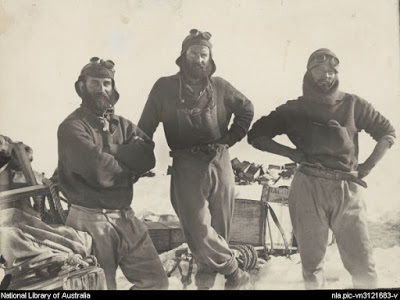
After returning to Australia in March 1913 Moyes became headmaster of the University Coaching College in Sydney. He was recruited as a naval instructor at the newly established Royal Australian Naval College in February 1914. Initially he specialized in mathematics but soon began to teach navigation and in 1915 spent some months in the cruiser H.M.A.S. Encounter, gaining practical navigating experience. He was promoted senior naval instructor in January 1916 and his polar experience was recognized when he was made navigating officer of the Aurora which, commanded by Captain John King Davis, sailed from New Zealand to the Ross Sea in December to rescue marooned members of (Sir) Ernest Shackleton's Trans-Antarctic Expedition.
Moyes found it galling to be 'chained to an office' at the naval college while others went to war. The naval board twice refused him leave to enlist in the Australian Imperial Force and rebuffed his plea for 'active service in the Navy' as his duties were considered of national importance. Finally, in October 1918 his resignation was approved for 31 January 1919, too late to achieve its purpose. On 11 January 1919 Moyes married Miriam Esther King at St James' Church, Sydney. He applied to rejoin the navy and was accepted as an instructor lieutenant in December with seniority for previous service. For nearly a decade his postings alternated between time at sea in cruisers instructing junior officers and sailors and shore service at H.M.A.S. Penguin and H.M.A.S. Cerberuswhere he supervised schoolmaster and instructor officers; he was promoted instructor lieutenant-commander in 1920 and commander in 1924.
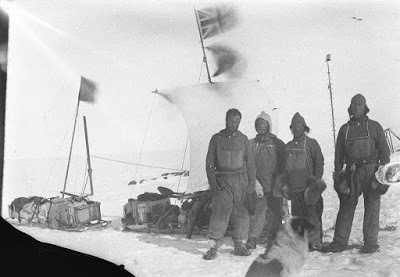
In September 1929, at Mawson's request, Moyes was seconded to the British, Australian and New Zealand Antarctic Research Expedition, which was to assert British territorial claims in Antarctica by means of two voyages in the auxiliary barque, Discovery. Moyes hoped to sail as a ship's officer but Davis, again in command, believed he lacked appropriate training. He joined the scientific staff as survey officer, spending long hours operating a defective echo-sounder, taking sights and drawing charts, helping with tow-nets, and assisting Mawson in executive matters.
The first B.A.N.Z.A.R.E. voyage, from October 1929 to April 1930, was not happy. Everyone became 'heartily tired of the bickering' between Mawson and Davis; Davis considered the crew and scientists formed 'two distinct parties' and was sceptical of the value of Moyes's work. However, the New Zealand meteorologist R. G. Simmers recalled Moyes as being 'very serious, precise and conscientious about his work' and 'a good steadying influence' on the younger expedition members. For private reasons Moyes did not undertake the second voyage in November 1930.
Resuming his naval career, Moyes spent nearly six years in H.M.A.S. Australia as fleet instructor officer and became the navy's first (acting) instructor captain in June 1941. Debarred from sea service by age and seniority, in November 1943 Moyes was appointed the first director of educational and vocational training at Navy Office, Melbourne, where he set up correspondence courses for those at sea and began a psychology section for vocational guidance.
When his naval career ended in 1946 he became the chief rehabilitation officer for the Commonwealth until 1951 and supervised the post-war training of some 11,000 ex-servicemen and women. In his long retirement he was an active president of the Naval Association of Australia and with rising public interest in Antarctic affairs became a minor celebrity as one of the last veterans of the 'heroic age' of Antarctic exploration.
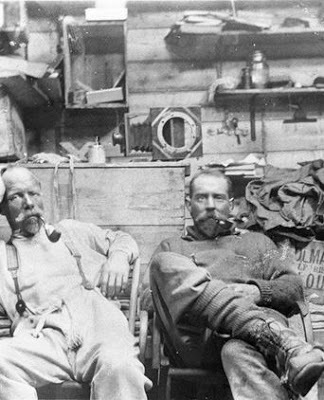
In recognition of his three Antarctic expeditions Moyes was awarded Polar medals in silver and bronze and a bronze clasp; he was appointed O.B.E. in 1935. He was a fellow of the Royal Geographical Society and president of the Geographical Society of New South Wales in 1933-35. He contributed substantially to an A.A.E. meteorology volume and the B.A.N.Z.A.R.E. report, 'Soundings'; later he published several reminiscences of his Antarctic experiences.
Moyes was sturdily built, erect in bearing and with a direct gaze; his sanguine temperament stood him in good stead during his Antarctic expeditions. A widower without children, he died in Sydney on 20 September 1981 and was cremated after a service at St Andrew's Church, Roseville. He is commemorated by several Antarctic place-names.

Clancy's comment: Better him than me. Too cold for me, but one has to admire his vision.
I'm ...


Published on August 13, 2016 14:21
August 12, 2016
13 August 2016 - PIRATES AND BURIED TREASURE

PIRATES AND BURIED TREASURE
G'day folks,
We have all heard of buried treasure. But ...
Pirate lore is rife with tales of hidden treasure and maps where “X” marks the spot, but there are only a few reliable accounts of buccaneers actually burying their loot. One early example concerns the English privateer Francis Drake. After a 1573 raid on a Spanish mule train, he and his men interred several tons of gold and silver along the Panamanian coast to prevent it from being recaptured. Drake left guards at the site, however, and quickly retrieved the booty after rendezvousing with his ships.

Another sea rogue who was not so fortunate was Captain William Kidd, the notorious privateer-turned-pirate who became a wanted man for plundering shipping in the Indian Ocean. In 1699, Kidd dropped anchor near New York and buried the modern equivalent of millions of dollars in gold and jewels on tiny Gardiners Island. He was soon arrested in Boston while trying to clear his name, and it wasn’t long before the authorities tracked down and confiscated most of the ill-gotten treasure. Kidd, meanwhile, was transported to London and executed by hanging.
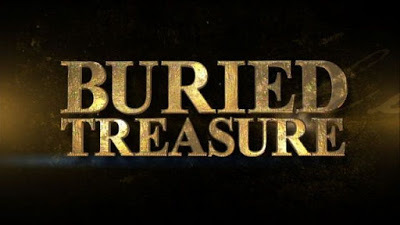
Like many other pirate myths, the concept of buried plunder was popularized by author Robert Louis Stevenson’s 1883 novel “Treasure Island,” which involves a hunt for a cache of gold hidden by a salty ship captain. Yet according to maritime historian David Cordingly, the buccaneers of old were rarely so frugal. Rather than turning a hole in the ground into a savings account, they were more likely to squander their spoils on women, rum and gambling as soon as they returned to port.

Even though real life pirate hoards were rare, legends still abound about long lost riches squirreled away on deserted islands. One of the most famous tales concerns the so-called “Treasure of Lima,” a haul of Spanish gold, silver and jewels supposedly stolen by a British ship captain named William Thompson and buried on Costa Rica’s Cocos Island around 1820. The loot is rumored to be worth around $200 million, but despite decades of searching, would-be treasure hunters have yet to track it down.

Clancy's comment: Imagine what treasures have never been found?
I'm ...

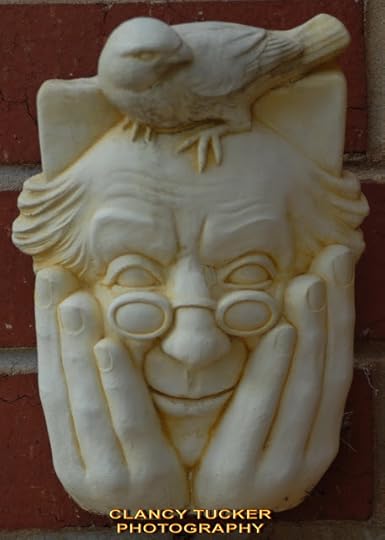
Published on August 12, 2016 16:51
August 11, 2016
12 August 2016 - GARY MILLER - Guest Author

GARY MILLER- Guest Author -
G'day folks,
Welcome to my interview with Gary Miller, an enthusiastic writer who has been inspired by living in the Rocky Mountains.
Welcome, Gary ...
1. TELL US A LITTLE ABOUT YOURSELF AND YOUR WRITING JOURNEY.
I was a late-bloomer to writing. A career in the automotive service industry occupied the majority of my working years. Living in the Rocky Mountains for sixteen years became the catalyst to life-changing experiences. I’m not certain whether it was the lack of oxygen at altitude, or being that much closer to God. Regardless, I discovered my creative vein as a writer. Essays, short stories, poems, novels, even a song or two––I found pleasure in writing them all, a joy I’ll continue to pursue as long as the Good Lord allows.
2. WHEN AND HOW DID YOU BECOME A WRITER?
I dabbled for years, but never considered “writer” as one of my titles. I didn’t begin seriously reading for pleasure until I was in my mid-30s. Reading led to a deeper appreciation of the craft. Inspiration struck in 1999, after watching the film JERIMIAH JOHNSON and completing James Michener’s CENTENNIAL, a novel based upon the setting and historical characters from the mountainous area where I lived. I thought, “I’d like to write a saga like CENTENNIAL. I can loosely base the plot around my family’s history and backdate all the main characters.”
After beginning that task and receiving encouragement from my wife and my father, I enrolled in a Beginning Writing class in 2001, followed by Advanced classes until 2003. The classes exposed a hidden talent and introduced me to my mentor and fellow writers, all of whom became dear friends. In 2003, three classmates and I formed a writing/critique group to further develop our mutual passion. Since then the group’s roster has expanded to over twenty-five members, many of them scattered across the US. We’ve all been writing ever since.
3. WHAT TYPE OF PREPARATION DO YOU DO FOR A MANUSCRIPT? DO YOU PLAN EVERYTHING FIRST OR JUST SHOOT FROM THE HIP?
Both methods. I have outlined plots for several novels waiting to be written, but I’m also a “pantser”, who can sit down at the computer with a concept in mind for one of my protagonists and then start writing. I’m fortunate to feel a bond with my central characters, as if they sit beside me when I write and share their ideas about their individual roles as fast as I can poke the keys.
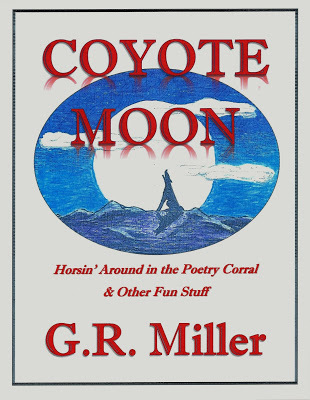
4. WHAT DO YOU ENJOY MOST ABOUT BEING A WRITER?
The freedom. The freedom to write about whatever pops into my mind. The freedom to become as wise, mean, caring, conniving, evil, sexy, bold, intuitive, cunning, or heroic as I want through my characters, without having to leave home or suffer the possible consequences associated with any of the aforementioned traits. It’s a blast!
5. WHAT IS THE HARDEST THING ABOUT BEING A WRITER?
Being a “pantser” can be tough at times. There can be periods when my characters refuse to chat and I have to force them to talk. Also, I have a bad habit of writing and editing at the same time. It’s a rare day when I can sit down and write without simultaneously editing what I’ve written, or what I am about to write. I envy the folks who can sit down and write without interruption––just get it all on down on the page first, and edit later.
6. WHAT WERE YOU IN A PAST LIFE, BEFORE YOU BECAME A WRITER?
Before becoming a writer I wore many hats. As previously stated, I was a gearhead that expanded into a career as an automotive technician, service manager, parts manager and instructor. Later on I was privileged to become a park ranger with the National Park Service. Writing allowed me to discover many new friends, one a singer, songwriter and musician, who encouraged me to join him, and pick up a bass guitar. We sang, played and wrote together for several years––still do when we have the opportunity.
7. WHAT IS YOUR GREATEST WRITING ACHIEVEMENT?
Discovering that I’ve been blessed with a gift––writing. Beyond that: Receiving consistent praise from my peers and earning their respect, plus, knowing that I’ve had the good fortune to share my gift by helping many other writers. Of course, seeing my work in print didn’t hurt either.
8. WHAT ARE YOU WORKING ON AT THE MOMENT?
My first Detective Ike Barney novel. Prior to this undertaking, Ike and his sweetheart, Arielle, were the primary characters in a seven-part short-story series. After sharing the opening to the eighth installment with my writers group, they insisted I should expand it into a novel. Not what I had in mind, but the journey so far has been wonderful. The good news: I’ve already written the plot lines for seven more Ike Barney novels.
9. WHAT INSPIRES YOU?
Life inspires me. The daily news is a never-ending source of inspiration that affords fiction writers the opportunity to embellish the truth through their characters. With my poetry, inspiration often strikes after hearing or saying a single word, or small phrase.
10. WHAT GENRE DO YOU WRITE?
My novels are primarily crime-based. I have two primary protagonists: Randal Murphy, a 1950s Private Eye, and Ike Barney, the contemporary Homicide Detective I previously mentioned. Both characters are based in St. Louis, MO, where I was born and raised. I also love to write poetry––old-fashioned, rhyming poems that feature distinct meter, tell a story and test my vocabulary. While living in Colorado, I wrote many heartfelt Western/Cowboy poems. Two of them were published as Cowboys & Indians Magazine’s online Poem of the Week.

11. DO YOU HAVE ANY TIPS FOR NEW WRITERS?
Write! Then, write some more…and more…and more. The most valuable mantra I received from my mentor was, “Writers write.” Although writers may have their preferences, they should never be inhibited by genre–writers write. Enroll in basic writing classes with a reputable instructor. Learn and practice the fundamental “rules” (I prefer to call them guidelines). Find your writer’s voice and stick with it. Connect with other writers via writer/critique groups or similar organizations. Most important: Never stop writing.
12. DO YOU SUFFER FROM WRITER’S BLOCK?
Certainly. Just like professional athletes, writers have slumps. Sometimes things just don’t click. The best way to recover? Write! Sure, what you see on the page may read like pure crap, but remember, crap can evolve into diamonds.
13. DO YOU HAVE A PREFERRED WRITING SCHEDULE?
Mornings are most often best for me. My mind is fresh and more focused on the task. But whenever the mood strikes, it’s time to write, even if it’s no more than a paragraph, a phrase or a few lines of prose or poetry.
14. DO YOU HAVE A FAVOURITE WRITING PLACE?
My “office”, a space shared with my wife, but dominated by my assorted presence.
15. WHAT IS YOUR GREATEST JOY IN WRITING?
Telling a tale and bringing characters and stories to life.
16. WHO IS YOUR FAVOURITE AUTHOR AND WHY?
My favorite author? That’s a difficult question to pin down. If an author has more than one novel and I’ve read most of them, they are definitely one of my favorites. There are two award-winning authors I respect more, however, I suppose because I know both of them and truly enjoy their work. Those folks are Sandi Ault and Craig Johnson––Sandi the author of the WILD Mystery series (Berkley Prime Crime); Craig the creator of the Walt Longmire series, (Viking).
17. WHAT’S THE GREATEST COMPLIMENT YOU EVER RECEIVED FROM A READER?
Jeez, I wish I could write like you.
18. WHAT WAS THE WORST COMMENT FROM A READER?
Okay, so what’s the point? (This from my wife––my first and most dependable critic and editor.)
19. WRITERS ARE SOMETIMES INFLUENCED BY THINGS THAT HAPPEN IN THEIR OWN LIVES. ARE YOU?
Of course. Writers that say otherwise are avoiding the truth. Whether Writer, Postman, Doctor or Refuse Collector, how can a person not be influenced by life events?
20. OTHER THAN WRITING, WHAT ELSE DO YOU LOVE?
My family, the outdoors, woodworking, playing bass guitar. Similar to writing, each of these affections can provide instant gratification…and/or disappointment––just like life. I suppose life should be foremost on my list. I also love life. Without life, nothing else would matter.
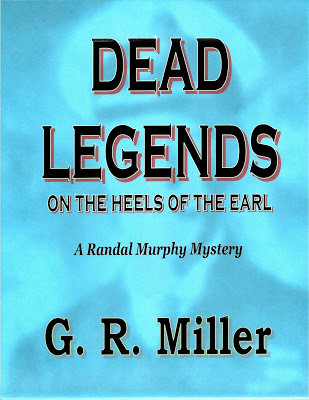
21. DID YOU HAVE YOUR BOOK / BOOKS PROFESSIONALLY EDITED BEFORE PUBLICATION?
Unfortunately I have yet to achieve the ranks of published novelist, something I intend to change. That said, as previously stated, I have the terrible habit of editing and writing at the same time and perform major editing chores during re-writes. On the other hand, I am not so egotistical as to believe my work is perfection. Unbiased, professional editors will become part of the future for my books.
22. DESCRIBE YOUR PERFECT DAY.
Waking up, breathing, feeling no pain and realizing all is well. As a writer, however, perfect days are the ones in which I awaken with my head abuzz with fresh ideas for my current project. Ideas that beg to spring onto the page, wondering why I bother choking down breakfast when they are ready to go. There’s more important business to attend to, man! Start pecking at the computer! Those are the productive days, when dialogue and narrative flow as if my characters were in the room speaking the lines as fast as I can type.
23. IF YOU WERE STUCK ON A DESERT ISLAND WITH ONE PERSON, WHO WOULD IT BE? WHY?
That person would have to be my wife. She’s the one person who knows me best. The person I can depend upon for all things.
24. WHAT WOULD YOU SAY IF YOU HAD THE CHANCE TO SPEAK TO WORLD LEADERS?
“WTF! We’re on this planet together; time we started working together, rather than against one another.”
25. WHAT ARE YOUR PLANS FOR THE FUTURE?
To live to a ripe old age, continue to write, watch my family grow, continue to write, publish my books, continue to write, travel, continue to write…
26. DO YOU SEE YOURSELF IN ANY OF YOUR CHARACTERS?
You bet, they are my alter-egos. I believe that most writers find a piece of themselves in their primary characters, both protagonist and antagonist––our way of living vicariously, never suffering the consequences of our actions.
27. DOES THE PUBLISHING INDUSTRY FRUSTRATE YOU?
It certainly has…which is why I abandoned that pursuit in favor of expanding my writing. Part of that decision was due to poor timing. I was sending queries during a period when the publishing industry here in the US was undergoing major change. E-publishing had opened a new market. Self-publishing had become (and remains) more widely accepted. Those two factors represented rapidly expanding competition the big publishing houses weren’t totally prepared to deal with. Some of the big house went under, merged or at least made major cuts. This is not to say I’ve given up on publishing. Overall, the industry is more stable now. Many small presses have joined the traditional publishing ranks. Self-publishing is a more viable option. E-publishing remains strong. It’s time to finish my current project, review the others and get back into the game.

28. DID YOU EVER THINK OF QUITTING?
Like most endeavours into new arenas, unless a writer happens to be one of the lucky few and attain instant recognition, he/she can beat his/her head against the wall just so many times before you wonder whether it’s all worth it––ask Stephen King. King is one of the most successful writers around the globe. Yet, in his book ON WRITING, he relates how he had reached a point when he was ready to forget about being a published author and remain a professor. He’d stuffed his first offering, CARRIE, in the trash before his wife and a phone call rescued it, and turned that near miss into publishing history.
29. WHAT WAS YOUR FAVOURITE MANUSCRIPT TO WRITE? WHY?
My favorite? All of them. Every manuscript I’ve either started or completed introduces new characters or further develops existing characters, which further develops the series and my writing. Witnessing characters spring to life and expand their horizons on the page is amazingly enjoyable.
30. HOW WOULD YOU DEFINE ‘SUCCESS’ AS A WRITER?
Finding satisfaction in what I write and knowing that my writing compares to many best-selling authors’ novels that I’ve read and continue to read. Although publication offers the opportunity for financial success and notoriety––the cherry on top––lack of publication should not be the indicator of a failed or untalented–– “unsuccessful”––writer. Some writers may opt to write for themselves, for the pleasure of writing, not the glory. Regardless, writers write and should never stop writing. Furthering that passion represents their success. 31. WHAT SHOULD READERS WALK AWAY FROM YOUR BOOKS KNOWING? HOW SHOULD THEY FEEL?
I write my novels, short stories and poetry to reflect the many facets of life through my characters, captured within an entertaining tale. Like many fiction writers, I attempt to keep it real, with a dash of humor such that readers may chuckle once in a while and maybe learn something along the way. Above all I want readers to be entertained, to finish one of my works with a smile.32. WOULD YOU LIKE TO HAVE YOUR BOOKS MADE INTO MOVIES? EVER WRITTEN A SCREENPLAY?
Of course. Although I’ve heard about authors’ disappointments after they viewed their characters inaccurately interpreted on the screen. Then again, every reader knows “the books are always better,” right?
Yes, I’m still working on a screenplay for a friend, his story, not mine. Writing a screenplay is much different from a novel––not a lot of room for flowery prose. 33. HOW MUCH THOUGHT GOES INTO DESIGNING A BOOK COVER?
Much more than most folks care to think about. Letter font and size used for the title and author’s name; eye-catching imagery; eye-catching colors and color contrast; and the overall arrangement of everything mentioned. Sounds simple, but there’s a fair amount of research involved as well. For the experience and fun of it, I’ve designed covers for my assorted projects, but when it comes down to the finished product, I’ll trust the professionals.
34. WHAT’S YOUR ULTIMATE DREAM?
Living to a ripe old age after having lived a full and satisfying time on earth, filled with memorable moments shared with family and friends. Too pat of an answer, perhaps? Okay, I’d like to have written and published my novels, received rave reviews and notoriety and then retire to the mountains without a care.
35. WRITING IS ONE THING. WHAT ABOUT MARKETING YOU, YOUR BOOKS AND YOUR BRAND? ANY THOUGHTS?
Writing is fun. Marketing is work, even with self-publishing, something all writers need to realize and accept. Marketing takes much time and effort, and may be the reason why some writers lose their desire to publish. Major publishing outlets may include publicists to help, but authors still need to meet and greet the public. Book signings, speaking engagements, networking via web sites and social media, contacting libraries (yes, libraries still exist) and newspapers: These are some of the common methods for authors to get the word out about their work. 36. ARE YOUR BOOKS SELF-PUBLISHED?
No, although I’ll probably utilize that option with one or more of my projects. Self-publishing no longer carries the “vanity publishing” stigma it did in the past. However, there’s a line I like to use regarding self-publishing: The good thing about self-publishing––anyone can get published; the bad thing about self-publishing––anyone can get published. That thought, however, should not deter the seriously minded author. Many best-selling authors with major publishing houses also utilize the self-publishing market to further their brand.
37. DESCRIBE YOURSELF IN FIVE WORDS.
Old-school; optimistic; caring; respectful; humorous
38. WHAT PISSES YOU OFF MOST?
Inconsiderate, impatient, hypocritical, irresponsible, “entitled” people. The ultimate pisser is when I catch myself displaying any one of those unfavorable qualities.
39. WHAT IS THE TITLE OF THE LAST BOOK YOU READ? GOOD ONE?
THE HIGHWAYMAN, by Craig Johnson, Viking. Yep, it was another good one, part of Craig’s ongoing Walt Longmire series.
40. WHAT WOULD BE THE VERY LAST SENTENCE YOU’D WRITE?
Honestly, I don’t want to know or even think about my last sentence. Realizing those final words forecasts finality to my writing…and to me.
41. WHAT WOULD MAKE YOU HAPPIER THAN YOU ARE NOW? CARE TO SHARE?
Unlimited Wi-Fi access! I live in the boonies, where our wireless/internet options are limited…and/or too damned expensive. Unlimited Wi-Fi would make research so-o-o-o-o-o much easier…and completing manuscripts so-o-o much faster.
42. ANYTHING YOU’D LIKE TO ADD?
Writing is an act of passion and solitude that non-writers seldom comprehend. When a writer suddenly drifts from conversation and stares into the distance as if in a trance, it’s not because they are being deliberately rude, or don’t care. Instead, it’s because they are spellbound by thoughts of their current (or next) project––they’re writing. Be patient, non-writers. Your writer companion will return.
I’d like to thank you, Clancy, for the opportunity to express my thoughts about writing, and to network with folks who share those views. Good writing to you all.Gary

Clancy's comment: Thank you, Gary. I've really enjoyed this interview. Keep going, mate.
I'm ...


Published on August 11, 2016 14:05
August 10, 2016
11 August 2016 - SANTA'S COOKIES AND MILK

SANTA'S COOKIES AND MILK
G'day folks,
Ever wondered why American kids leave cookies and milk for Santa?
This Christmas Eve, millions of American children will leave out cookies and milk for Santa Claus to enjoy after his trip down their chimney with his bag of gifts. Some will add a few carrots for his trusty reindeer, as Dasher, Dancer, Prancer, Vixen, Comet, Cupid, Donner, Blitzen and Rudolph need sustenance as well. We take a look the origins of this particular custom and how it varies among children in different countries throughout the world.
Today in the United States, leaving out a plate of cookies (Oreos and classic chocolate chip are popular choices) and a glass of milk for Santa Claus on Christmas Eve is a well-established tradition among children. But it hasn’t always been that way. According to one theory, the cookies-and-milk custom is derived from an older tradition, when families would stuff stockings with goodies for Santa and hang them by the chimney, his preferred mode of entrance, as a welcoming gift. Now, however, those stockings are usually chock-full of treats and smaller gifts for the family members themselves.
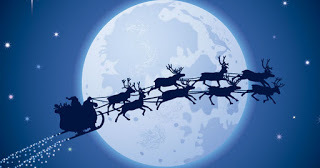
Leaving cookies and milk for Santa—and perhaps a few carrots for his reindeer—took off as an American holiday tradition in the 1930s, during the Great Depression. In that time of great economic hardship, many parents tried to teach their children that it was important to give to others and to show gratitude for the gifts they were lucky enough to receive on Christmas. Some 80 years later, many children still set out cookies and milk for Santa, whether out of the goodness of their hearts or (in less wholesome cases) as a bribe to receive more gifts from the jolly bearded man in the red suit.

The original roots of this holiday food tradition go back even further—all the way to ancient Norse mythology. Odin, the most important Norse god, was said to have an eight-legged horse named Sleipner, which he rode with a raven perched on each shoulder. During the Yule season, children would leave food out for Sleipner, in the hopes that Odin would stop by on his travels and leave gifts in return. Such a tradition continues today in countries such as Denmark, Belgium and the Netherlands, where children still believe that horses carry Santa’s sleigh instead of reindeer. On Christmas Eve, they leave carrots and hay—sometimes stuffed into shoes—to feed the exhausted animals. In return, they might hope to receive such holiday treats as chocolate coins, cocoa, mandarin oranges and marzipan.
Over the years, different countries have developed their own versions of the cookies-and-milk tradition. British and Australian children leave out sherry and mince pies, while Swedish kids leave rice porridge. Santa can expect a pint of Guinness along with his cookies when delivering toys in Ireland. French children leave out a glass of wine for Père Noël and fill their shoes with hay, carrots and other treats for his donkey, Gui (French for “mistletoe”).

In Germany, children skip the snacks altogether and leave handwritten letters for the Christkind, a symbolic representation of the Christmas spirit who is responsible for bringing presents on Christmas. Though many German kids mail their letters before the holiday—there are six official addresses for letters addressed to the Christkind—others leave them out on Christmas Eve, decorated with sparkly glue or sugar crystals. On Christmas morning, the letters have been collected, and gifts left in their place.

Clancy's comment: Mm ... No wonder Santa has always been depicted as a well-rounded man.
I'm ...
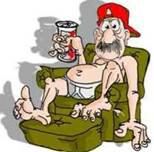

Published on August 10, 2016 03:29
August 9, 2016
10 August 2016 - WISE WORDS

WISE WORDS
G'day folks,
Time to check out some great quotes.







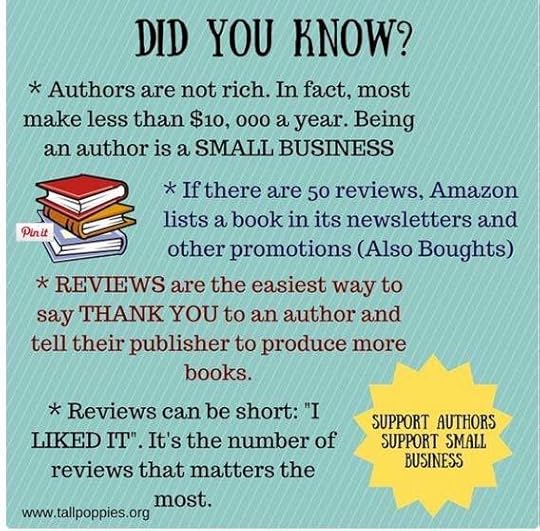

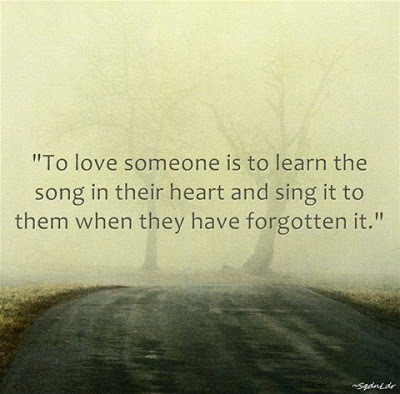



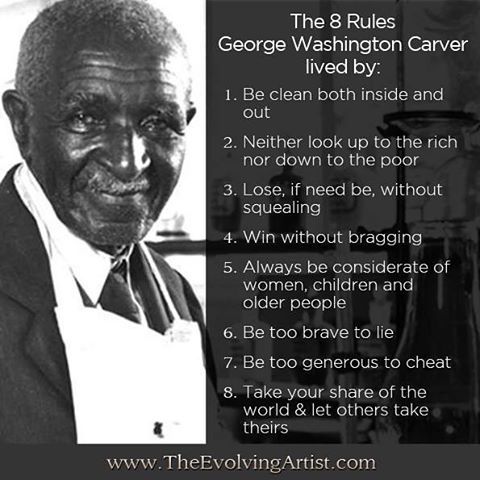

Clancy's comment: As always, some goodies to think about.
I'm ...


Published on August 09, 2016 14:16
August 8, 2016
9 August 2016 - WAS THERE A MOTHER GOOSE?

WAS THERE A MOTHER GOOSE?
G'day folks,
No doubt this will upset some people who believe there was.
If you’ve ever visited the Old Granary Burying Ground in Boston, Massachusetts, you may have stumbled upon the tombstone of Mary Goose, a woman believed by some to be the infamous author of countless cherished nursery rhymes: Mother Goose. Visitors toss coins at her tombstone, presumably to garner a bit of good luck, but the woman who was buried there in 1690 is undoubtedly not the original Mother Goose.
According to local legend, it was the widowed Isaac Goose’s second wife, Elizabeth Foster Goose, who entertained her numerous grandchildren and other youngsters with songs and rhymes that were purportedly published by her son-in-law in 1719. Yet despite repeated searches for a copy of this collection, no evidence of its existence has ever been uncovered. Regardless, most historians agree that neither Mary nor Elizabeth created the stories that have passed on from generation to generation.

In fact, the etymology of the moniker “Mother Goose” may have evolved over centuries, originating as early as the 8th century with Bertrada II of Laon (mother of Charlemagne, the first emperor of the Holy Roman Empire) who was a patroness of children known as “Goose-foot Bertha” or “Queen Goosefoot” due to a malformation of her foot.

By the mid-17th century, “mere l’oye” or “mere oye” (Mother Goose) was a phrase commonly used in France to describe a woman who captivated children with delightful tales. In 1697, Charles Perrault published a collection of folktales with the subtitle “Contes de ma mère l’oye” (Tales from my Mother Goose), which became beloved throughout France and was translated into English in 1729. And in England, circa 1765, John Newbery published the wildly popular “Mother Goose’s Melody, or, Sonnets for the Cradle,” which indelibly shifted the association of Mother Goose from folktales to nursery rhymes and children’s poetry, and which influenced nearly every subsequent Mother Goose publication.

Clancy's comment: Wow, if a goose can become famous, I guess there is hope for me.
I'm ...

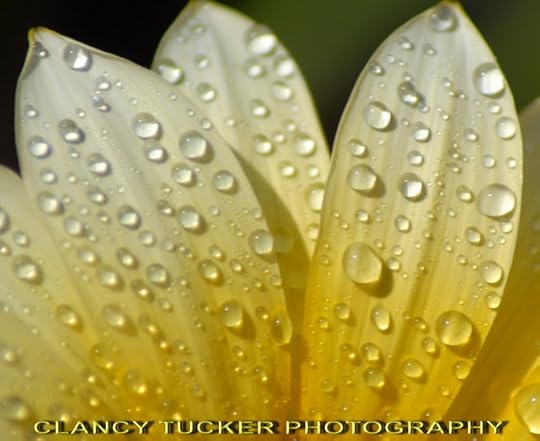
Published on August 08, 2016 14:13
August 7, 2016
8 August 2016 - KIDS FROM EGYPT
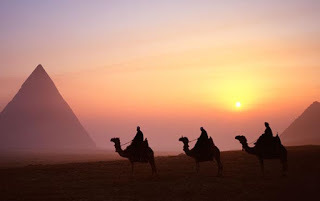
KIDS FROM EGYPT
G'day folks,
Welcome to the lives of kids from Egypt. Egypt, a country linking northeast Africa with the Middle East, dates to the time of the pharaohs. Millennia-old monuments still sit along the fertile Nile River Valley, including the colossal Pyramids and Sphinx at Giza and the hieroglyph-lined Karnak Temple and Valley of the Kings tombs in Luxor. The capital, Cairo, is home to Ottoman landmarks such as Muhammad Ali Mosque.

Continent: North Africa/Middle EastClimate: Hot desert! In summer, temperatures average more than 100 degrees.School: School attendance is required for six years, generally beginning at age six or seven. However, many do not attend; literacy in Egypt is less than 60%. Besides lessons in reading and writing, the school week includes religious education. Muslim and Christian children receive separate instruction.Play: Shooting marbles is a popular pastime, and one that—like tic tac toe—may have been passed down from ancient Egypt.Soccer is the number one sport; tennis, squash and wrestling are also favorites.Family: Egyptians generally live in nuclear family households, but close to extended family; in a city, related families may live in the same apartment building.In most families, girls help with indoor chores, such as laundry, while boys help with outdoor chores, such as shopping.Signature foods: Fool medames, a dish of seasoned fava beans; the number-one dish in Egypt today, it has been eaten since ancient timesKoshari, a stewlike dish of lentils, rice and noodles topped with spicy tomato sauce and fried onionsInteresting animals: The bushy-tailed jird, a fast-climbing desert gerbil with big ears and a distinctive plume-like tailThe little green bee eater, a tiny bird with a bright green body and turquoise face; it usually removes the stinger from a bee or wasp before eating itUnique holiday: One of the oldest festivals in the world—dating back 4,500 years—Sham el-Nessim (“Sniffing the Breeze”) marks the beginning of spring. Families celebrate this national holiday with daylong picnics.Did you know? Egypt is home to the Nile, the world's longest river. Its shores are home to both modern cities and ancient ruins. About 200 species of fish, 350 species of birds and the famous Nile crocodile all depend on this great river.



Clancy's comment: Steeped in history and wars. Amazing place. A great place to find sand for your kid's sandpit.
I'm ...


Published on August 07, 2016 14:50
August 6, 2016
7 August 2016 - WHO WAS MOLLY PITCHER?
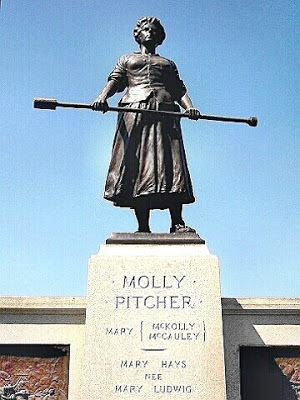
WHO WAS MOLLY PITCHER?
G'day folks,
We have all heard of some great stories that happened during wartime. Here is another ...
A heroine of the Revolutionary War, Molly Pitcher was the nickname of a woman said to have carried water to American soldiers during the Battle of Monmouth on June 28, 1778, before taking over for her husband on the battlefield after he was no longer able to fight. There’s no definitive proof about who Pitcher was—and there’s debate about whether she even existed at all—but most commonly she’s been identified as Mary Hays McCauley.
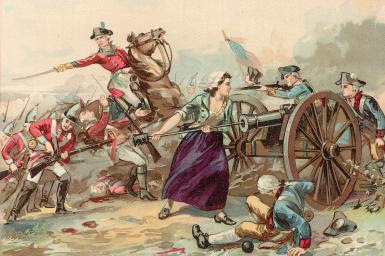
Born in Pennsylvania in 1754 (or possibly 1744), Mary may have worked as a servant before marrying William Hays, of Carlisle, Pennsylvania. During the war, Hays served as a gunner in the 4th Artillery of the Continental Army while Mary became part of the group of women, later referred to as camp followers, who traveled with the army and took on such duties as cooking, washing and caring for sick and wounded soldiers.
At the Battle of Monmouth, which took place on a sweltering summer day in Monmouth County, New Jersey, Continental forces under General George Washington faced off against British troops under General Henry Clinton. Mary brought water to the parched American troops until her husband collapsed, either from the heat or after being wounded, after which she supposedly took his place and helped operate cannon for the rest of the battle.
A soldier who witnessed the action later wrote about in his diary, without referring to the woman involved by name: “While in the act of reaching a cartridge and having one of her feet as far before the other as she could step, a cannon shot from the enemy passed directly between her legs without doing any other damage than carrying away all the lower part of her petticoat.”
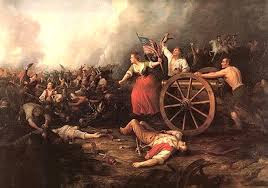
The longest single day of fighting of the American Revolution, the Battle of Monmouth ended in a tactical draw. Following the war, Mary and her husband returned to Carlisle, where he died several years later. Mary went on to wed John McCauley, about who little is known. In 1822, the state of Pennsylvania awarded her an annual pension of $40 “for services rendered during the war.”
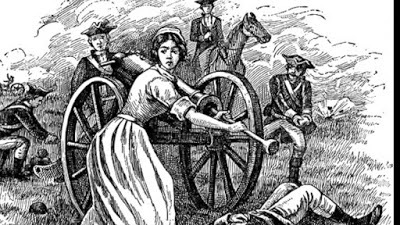
Following Mary’s death in 1832, newspaper stories noted her bravery during the war but offered no details about which battle she served in. In the ensuing decades, accounts spread about Molly Pitcher, an unnamed woman who manned a cannon at the Battle of Monmouth. Mary Hays McCauley became formally linked with the Revolutionary War heroine in 1876, when residents of Carlisle decided to mark her grave as that of Molly Pitcher.

Clancy's comment: Go, Molly!
I'm ...


Published on August 06, 2016 14:33



